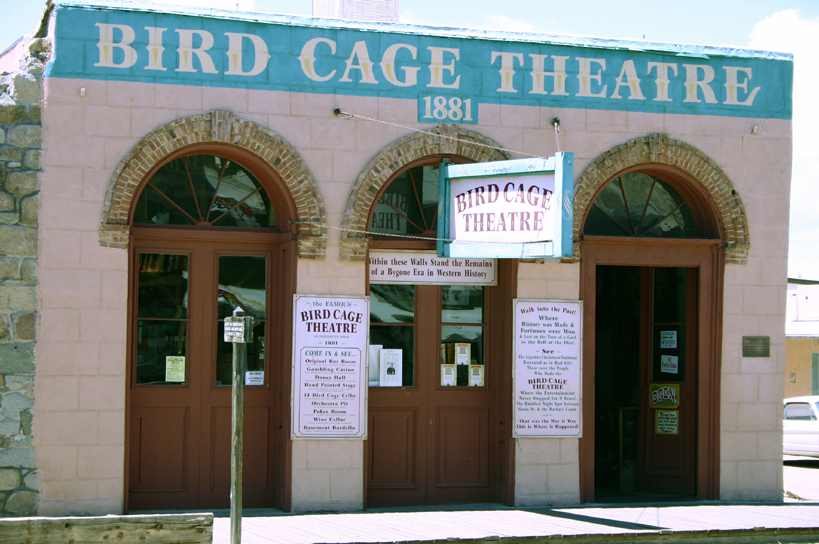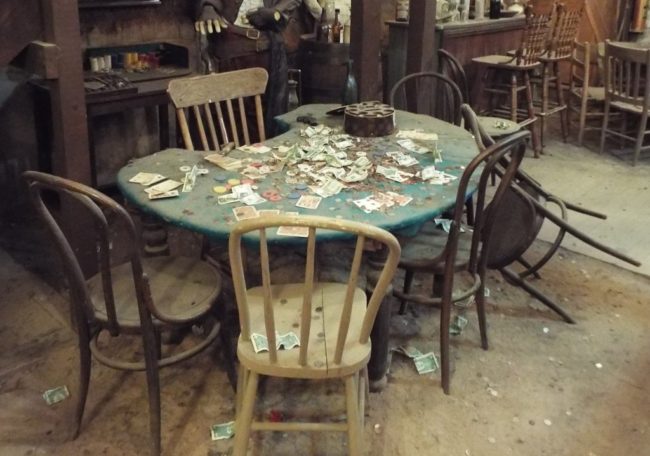
The United States is packed with interesting and appealing theatres, all steeped in history and tradition.
Some are still in use, hosting everything from Shakespeare to Cats, whilst others have become part of folklore, locations with a rich historical background that continue to be revered today. It is fair to say that the range of theatres across the US caters for every taste in terms of shows, opulence and grandeur. One of the most historic only opened for a decade or so but has become something of a legend. Located in Tombstone, Arizona, that theatre was the Bird Cage.
The Bird Cage opened in 1881 and was originally owned by Lottie and Billy Hutchinson. He was a variety performer, and he originally intended to put on wholesome family shows, the likes of which he’d seen in San Francisco. Tombstone had only been founded four years earlier and was on its way to becoming one of the boomtowns of the frontier. Nearby silver mines produced $85m worth of bullion, and settlers flocked to the town looking to make their fortune. The population grew from 100 to around 14,000, and Hutchinson felt a need for a theatre.
After the theatre opened, they began hosting ladies nights for the respectable women of the town. They were hopeful of attracting a tasteful crowd to whom they could perform shows and attract exotic acts and plays. Sadly, the town’s population was not as enamored with the theatre as Hutchinson had hoped, and they began to put on more basic shows appealing to the mining community.
Early acts included opera singer Carrie Delmar and comedy act Burns and Trayers. They also showcased the rather odd talents of Alma Hayes, as known as Mademoiselle De Granville and the Female Hercules. She would perform feats of strength, including picking up large objects with her teeth. There was plenty of variety at the Bird Cage, with Hutchinson going all-in on some acts. He even put on Cornish Wrestling and masquerade balls, with the doors remaining open all night to suit the miners.

Sadly, the silver boom was short-lived, and the Bird Cage became less of a theatre and more of a den of iniquity. It does have one serious claim to fame around the game of poker. You might think that the mammoth poker games during the World Series of Poker are long; in 2018, the final took 199 hands and 10 hours. Well, even if you spend days playing poker in a casino, you’d have nothing on the Bird Cage. The poker game in their basement lasted not for hours, nor days, but years. Those who wished to play were forced to pay $1,000 upfront, and it simply ran 24 hours a day, seven days a week from 1881 through 1889. Famous players included Wyatt Earp and Doc Holliday, and it is estimated that $10m passed through the basement during that time; $276m by today’s money. That would make the Bird Cage not only a historic theatre but a lucrative gaming establishment, too.
Hutchinson’s aspirations for the theatre were not matched by his clientele. There were no big shows or musicals that could satisfy customers as much as the more salacious acts. He sold up in 1882, and the establishment became less of a theatre and more of a freak show; later acts included Big Minnie, a 6ft, 230lb dancer and singer. Many of Tombstone’s residents left in the late 1880s as the price of silver slid, and the theatre closed its doors in 1892. It later reopened as a coffee shop and is a tourist attraction today, with ghost tours regularly held there.
The Bird Cage certainly started as one of the earliest examples of theatres on the frontier, but circumstances quickly changed the direction of its shows. However, it remains a great tourist attraction, even to this very day.
